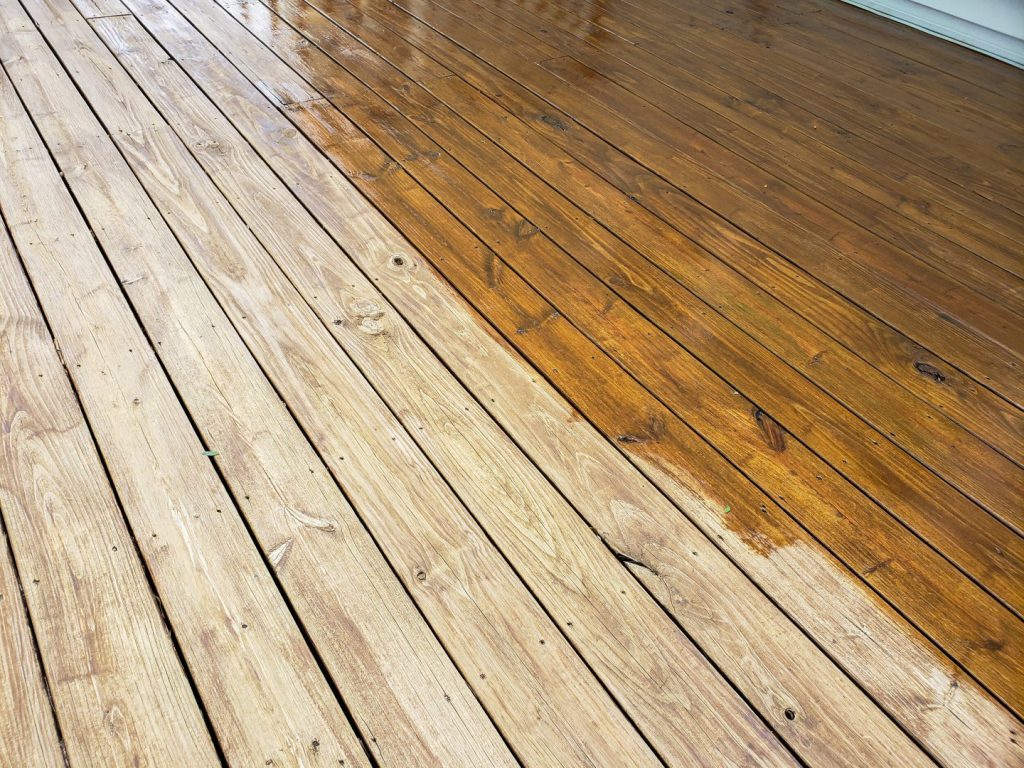Introduction
When it comes to staining wood, the choice between water-based and oil-based stains can significantly impact the final outcome. Understanding the distinct properties and advantages of each type is crucial for achieving the desired look and durability for your woodworking project. This comprehensive guide will delve into the intricacies of water-based and oil-based stains, empowering you with the knowledge to make an informed decision.

Image: www.jvkandsons.com
Understanding Water-Based Stains
Water-based stains, as their name suggests, use water as their primary solvent. They offer several advantages that make them a popular choice for many woodworkers.
Environmental Friendliness
Water-based stains emit significantly lower levels of volatile organic compounds (VOCs) compared to oil-based stains. This makes them a greener option, reducing the environmental impact of your staining project.
Quick Drying Time
Water-based stains dry much faster than oil-based stains, allowing you to apply multiple coats more quickly. This can save you time and reduce the downtime between coats.

Image: www.pinterest.com
Easier Cleanup
Since water-based stains are water-soluble, cleanup is a breeze. Soap and water effortlessly remove any excess or spills, eliminating the need for harsh solvents or chemical strippers.
Delving into Oil-Based Stains
Oil-based stains, on the other hand, utilize mineral spirits or other oil-based solvents as their carrier. They provide their own unique set of benefits and considerations.
Deeper Penetration
Oil-based stains penetrate deeper into the wood, enhancing the natural grain and showcasing intricate details. This creates a richer, more vibrant finish that accentuates the beauty of the wood.
Higher Durability
The oil in oil-based stains acts as a protective layer, enhancing the wood’s resistance to wear, moisture, and fading. This makes them an excellent choice for high-traffic areas or outdoor applications.
Enhanced Color Retention
Oil-based stains are known for their excellent color retention, minimizing fading over time. The oil solvent helps to lock in the color pigments, ensuring a long-lasting and vibrant finish.
Exploring the Key Differences
To help you make the right choice for your project, here’s a summary of the key differences between water-based and oil-based stains:
| Feature | Water-Based Stains | Oil-Based Stains |
|---|---|---|
| Solvent | Water | Mineral spirits or other oils |
| Drying Time | Fast (within hours) | Slow (can take days) |
| Cleanup | Soap and water | Solvents or strippers |
| Penetration | Shallower | Deeper |
| Durability | Lower | Higher |
| Color Retention | Good | Excellent |
| VOC Emissions | Lower | Higher |
Matching Stain to Wood Type and Project Requirements
Choosing the right stain for your specific wood type and project is essential. Here’s a general guide to help you make the best decision for your needs:
-
Softwoods (e.g., pine, spruce): Both water-based and oil-based stains work well, but water-based stains may require multiple coats for deeper color penetration.
-
Hardwoods (e.g., oak, mahogany): Oil-based stains are generally preferred as they provide richer finishes and enhance the wood’s natural beauty.
-
High-Traffic Areas: Oil-based stains offer superior durability, making them a more suitable choice for frequently used surfaces.
-
Outdoor Use: Oil-based stains’ resistance to moisture and fading makes them ideal for protecting wood exposed to the elements.
Difference Between Water Based And Oil Based Stain
Conclusion
Whether you opt for water-based or oil-based stain, both options provide unique advantages that cater to different project requirements. Understanding the distinctions between them empowers you to make an informed decision, ensuring the perfect finish for your woodworking masterpiece. Remember to conduct thorough research and consider the specific characteristics of your wood and project before choosing a stain. Explore the resources available online and consult with experts in the field for further guidance and inspiration.


/GettyImages-1303637-two-way-mirror-57126b585f9b588cc2ed8a7b-5b8ef296c9e77c0050809a9a.jpg?w=740&resize=740,414&ssl=1)


